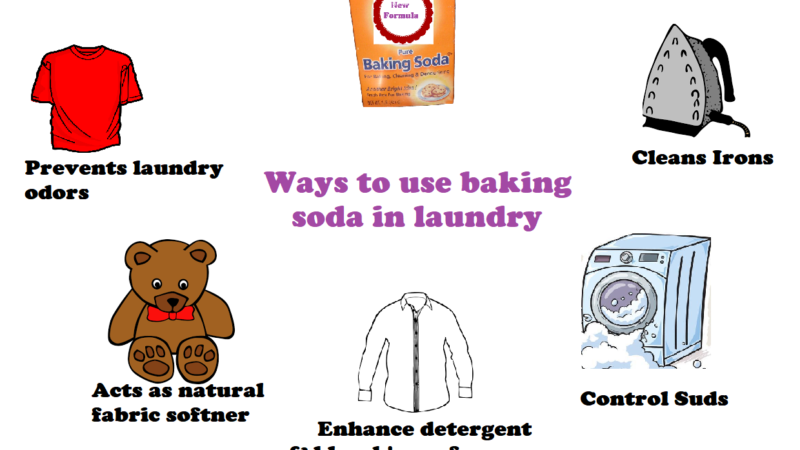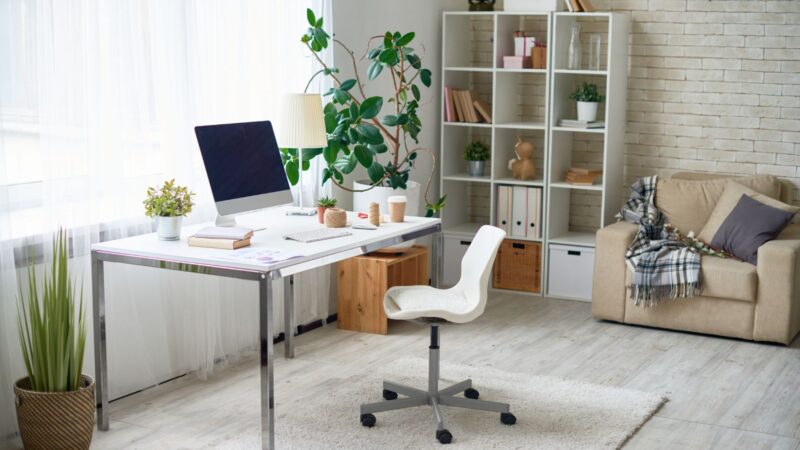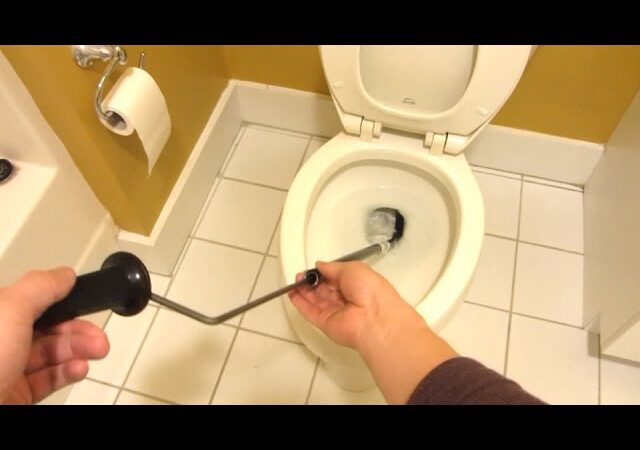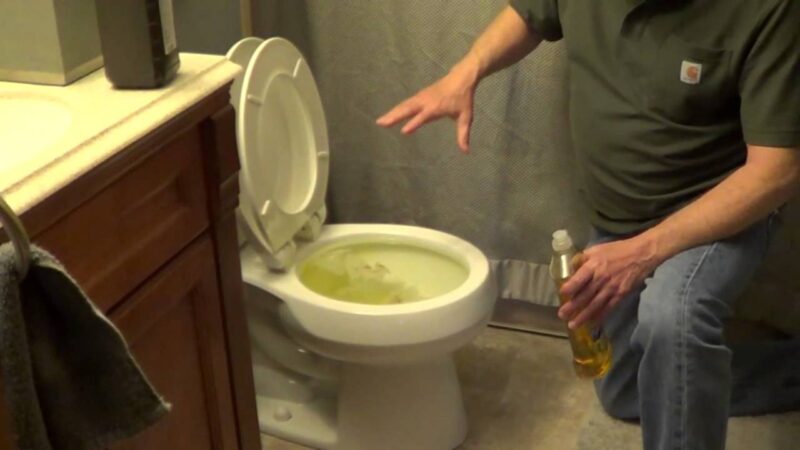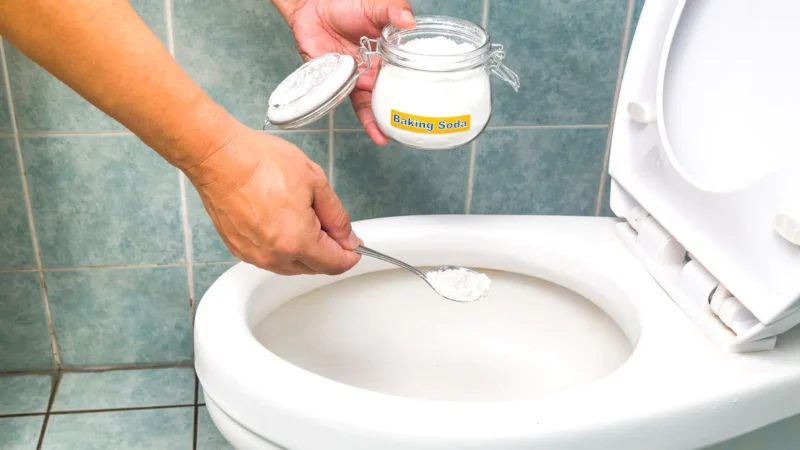How to Get Rid of Mold in Bathroom?
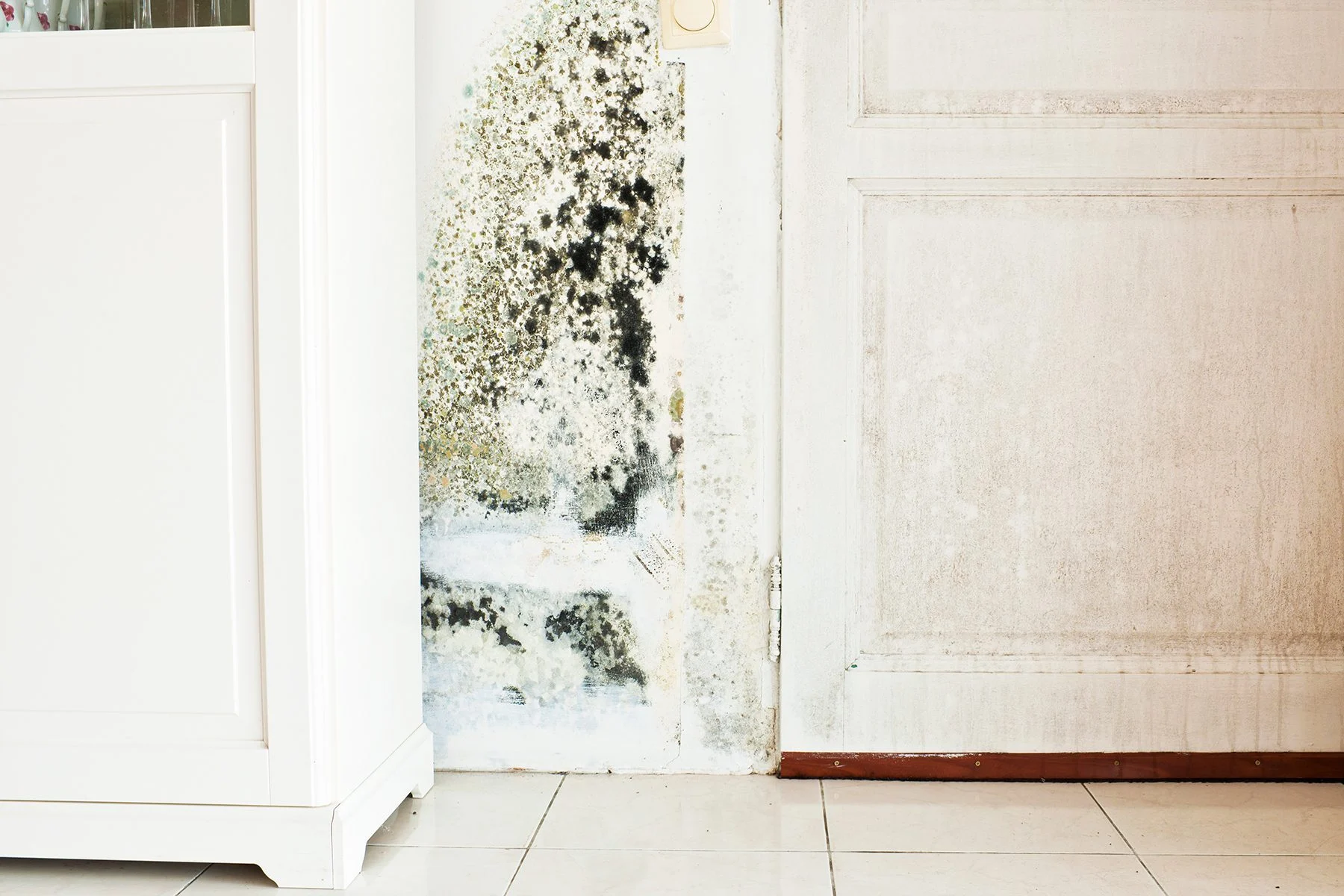
Many people face mould in the bathroom. Mould loves to grow in damp and humid places, causing ugly stains and potential health issues. Thankfully, getting rid of mould isn’t too hard. This article will show you easy and effective ways to remove mould from your bathroom and share tips to prevent it from coming back. By following these steps, you can keep your bathroom clean and healthy for everyone.
Mould is a common type of fungus found almost everywhere. It reproduces by releasing tiny spores into the air and plays an essential role in breaking down dead leaves, plants, and trees in nature. Whether it’s black, green, orange, or even purple, mould grows in damp, dark, and poorly ventilated areas. Regular professional cleanings or occasional deep cleanings are recommended to keep mould at bay.
What Is the Main Cause of Mold in the Bathroom?
Mold often develops on bathroom ceilings due to the naturally warm and humid conditions found in these spaces. Here are the main reasons behind mold growth:
- Excess Moisture: Bathrooms generate a lot of moisture from showers, baths, and sinks. Without proper ventilation, this moisture can collect on surfaces, providing an ideal environment for mold to flourish.
- Poor Ventilation: Insufficient airflow prevents humidity from escaping, leading to ceiling condensation.
- Warm Temperatures: The heat from showers and baths creates a warm, damp atmosphere where mold can thrive.
- Leaks: Leaks from pipes, windows, or the roof introduce additional moisture, creating persistently damp conditions that encourage mold growth.
- Lack of Sunlight: Limited exposure to natural light means surfaces dry more slowly, allowing moisture to linger and mold to take hold.
Tools for Removing Mold
To effectively remove mold from your bathroom ceiling, you’ll need to gather the following tools and materials:
- Gloves (rubber or nitrile)
- Protective eyewear
- Sponge or soft-bristled brush
- Spray bottle
- Cleaning solution (such as white vinegar, hydrogen peroxide, or a DIY mixture)
- Warm water
- Microfiber cloths or rags
- Stepladder
- Plastic sheeting or drop cloths
Using the right tools and cleaning solutions is crucial for safely and effectively dealing with mold. Gloves and protective eyewear will shield you from mold spores and harsh cleaning chemicals. A spray bottle helps distribute the cleaning solution evenly, while a sponge or soft-bristled brush is essential for scrubbing away stubborn mold.
Warm water and microfiber cloths are perfect for rinsing and wiping down surfaces after cleaning. If the mold has spread to a larger area or onto porous surfaces like drywall, plastic sheeting will help contain the spores and stop them from spreading further.
With the proper tools and materials, you’ll be ready to tackle mold removal on your bathroom ceiling like a pro.
Identifying Different Types of Mold
Identifying the type of mold in your bathroom is essential for handling the issue correctly. Different moulds can present various health risks and may require different methods of removal. Knowing the characteristics of the mould can help you take the right precautions and select the most effective approach to removing it.
Here are some common types of mold you may encounter:
Alternaria (Alternaria spp.)
This mould is typically black to olive-black or greyish and has a suede-like or fluffy texture. It spreads quickly and is commonly found in bathrooms. It can cause severe asthma, allergic rhinitis, sinus infections, and in rare cases, fungal balls in the sinuses.
Aspergillus (Aspergillus spp.)
Dark green with a white border, it turns gray with age and has a downy to powdery texture. It thrives in warm, damp areas like bathrooms. It can trigger allergic reactions, chronic lung issues, and even invasive diseases.
Chaetomium (Chaetomium spp.)
Initially, this mould appears cotton-like but changes to a bluish-green colour over time. It is typically found on wood, drywall, and wallpaper in bathrooms. Prolonged exposure can worsen respiratory problems, especially for those with asthma or cystic fibrosis.
Fusarium (Fusarium spp.)
This mould, which has a cottony texture, ranges in colour from pale to bright shades of white, yellow, pink, red, or purple. It is often found in damp areas, especially on water-damaged surfaces in bathrooms. Fusarium can lead to infections like keratitis and onychomycosis and, in rare cases, more serious infections.
Mucor (Mucor spp.)
Mucor mould grows rapidly and has a cottony to fluffy texture, typically white to yellow, before turning dark grey. It can be found in damp places like bathrooms, behind wallpaper, and under sinks. Also known as black fungus, it can cause rare and serious infections, including those affecting the respiratory system.
Penicillium (Penicillium spp.)
This fast-growing mold is typically white or green and is often found in damp or water-damaged areas such as bathrooms. It can lead to allergic reactions, asthma, and, in some cases, infections.
Stachybotrys (Stachybotrys chartarum)
Known as “black mold,” Stachybotrys is a slimy green or black mold that thrives in dark, humid areas like showers and basements. It can cause a variety of health problems, including nasal irritation, cough, wheezing, chest tightness, and shortness of breath.
Identifying mould can be difficult, and in some cases, professional testing may be required, especially if you suspect the presence of toxic moulds like Stachybotrys. Regardless of the type, it’s important to address mould issues promptly to avoid spreading and minimize potential health risks.
How Harmful Is Black Mold in Your Home?
Many different types of mould can grow indoors, but black mould, specifically Stachybotrys, is one of the more harmful varieties. However, all types of mould can negatively impact your health, so it’s important to address any mould you discover as soon as possible. When checking your bathroom for mold, pay close attention to grout lines, the areas around drains, and walls.
How Can I Remove Black Mold from My Bathroom?
What’s the most effective way to kill mold? Various black mould removal solutions, including DIY methods and store-bought cleaners, can help eliminate mould spores from your bathroom. As soon as you spot mould, it’s important to act quickly and not only remove the mould but also tackle the stains it leaves behind. Here are some of the best products and methods for removing mold in your bathroom:
Bleach
Bleach effectively kills mold on hard, non-porous surfaces like tiles and tubs. However, it doesn’t work well on porous materials like drywall or wood. The chlorine in bleach can’t penetrate these materials, and the water content can actually create the perfect environment for mold to regrow. While bleach can lighten the appearance of mould, it doesn’t eliminate it completely. Use bleach sparingly and only for small areas. If mold returns, consider using borax or vinegar instead.
Borax
Borax, a natural mineral compound, is a powerful mold killer that works on various surfaces, including wood and metal. It’s safe to use as it doesn’t release harmful fumes like some chemical cleaners. Borax has a high pH level (9.13), which kills mold and prevents its spores from spreading. For just a few dollars, you can find Borax in most grocery stores in the laundry aisle.
Vinegar
White vinegar has antifungal and antibacterial properties, making it effective in killing mould on non-porous surfaces. It’s especially useful for small mold outbreaks. However, it may not be as effective on porous materials like carpets or fabrics. Vinegar is also acidic, so avoid using it on natural stone, waxed wood, aluminium, or cast iron, as it can damage these surfaces. Both white distilled vinegar and cleaning vinegar (with 6% acidity) are effective for mold removal.
Hydrogen Peroxide
Hydrogen peroxide is another natural mould cleaner with antifungal and antibacterial properties. It works by breaking down mold components. It’s generally safe to use on most solid surfaces and synthetic fabrics, but it can bleach natural fabrics like wool. After using hydrogen peroxide, be sure to wipe down the area thoroughly.
Baking Soda
Baking soda is an effective mold remover, especially when combined with vinegar. For a mold-fighting paste, mix two parts baking soda with one part water and one part white vinegar. Apply the paste to the mouldy area and let it dry. Once it hardens, scrub the surface thoroughly. You may need to repeat this process until the mold is completely gone.
Remember, the source of moisture that caused the mold to grow needs to be addressed to prevent it from returning. If the mould covers an area larger than 10 square feet or has spread into your ventilation system, it’s best to call a professional mould removal specialist.
Health Risks of Mold
Mold on bathroom ceilings can pose significant health risks if not dealt with properly. Exposure to mold spores can trigger allergic reactions, asthma attacks, respiratory infections, and even more severe health problems. If you suspect there is harmful mold in your bathroom, it’s important to seek professional help.
You might consider hiring deep cleaning services through platforms like TaskRabbit to prevent mould from developing or reappearing. TaskRabbit connects you with reliable Taskers who can thoroughly clean your bathroom, including high-risk areas such as the shower and ceiling.
By scheduling regular cleaning sessions with TaskRabbit, you can help eliminate mould spores and keep your bathroom clean and healthy, reducing the chances of mould returning in the future.
Safety Tips for Cleaning Mold
Mold can release harmful toxins, so it’s important to take precautions when cleaning it. Here are some key safety guidelines to follow:
- Wear disposable or old clothes: Use clothes you don’t mind discarding, or that can be thoroughly washed afterwards.
- Protect yourself with proper gear: Wear an N-95 respirator, gloves, and protective eyewear to shield yourself from mold spores and chemicals.
- Seal and dispose of moldy items: If you’re dealing with moldy carpeting, wrap it in plastic, tape it securely, and double-bag it before discarding it.
- Use a fan for ventilation: Set up an old fan to help ventilate the area while you clean, but dispose of the fan afterwards to avoid spreading mold spores.
- Dampen the mold before removal: Lightly spray the affected areas with water to prevent spores from becoming airborne as you clean.
- Turn off HVAC and furnace systems: Ensure your heating and cooling systems are turned off and cover their ducts to prevent mold from spreading through the air vents.
- Avoid mixing bleach and vinegar: Never combine these two, as it produces chlorine gas, which can be deadly in high concentrations.
How to Remove Mold from Your Bathroom Ceiling
Removing mold from your bathroom ceiling, walls, or shower curtain requires the right approach and safety measures. Here’s a step-by-step guide to effectively clean mold and prevent it from returning:
Gather Your Protective Gear
Before you begin, wear rubber gloves, goggles, and a mask or respirator to protect yourself from inhaling mold spores. You’ll also need a scrub brush, cleaning cloths, and a plastic sheet or drop cloth to cover surrounding surfaces and contain any mould.
Prepare Your Cleaning Solution
Mix a solution of one part bleach to three parts water in a bucket or spray bottle. Alternatively, you can use borax mixed with water or undiluted white vinegar, both of which are natural and effective mold removers.
Apply the Cleaning Solution
Spray or apply the cleaning solution generously to the mouldy areas, ensuring that the surface is fully saturated. Allow it to sit for 10-15 minutes so it can penetrate and kill the mold spores.
Scrub and Wipe
Use the scrub brush to scrub the affected areas, working to remove as much mold as possible. Once you’ve scrubbed the area, wipe away the residue with a clean cloth or paper towels.
Rinse and Dry
Rinse the area thoroughly with clean water to remove any remaining cleaning solution or mold particles. Then, fans or a dehumidifier can be used to help the area dry completely. Moisture can lead to mould regrowth, so ensure the space is completely dry.
Treat and Prevent Future Growth
Once the area is dry, consider applying a borate-based solution or a mould-resistant primer to help prevent future mould growth. Be sure to fix any underlying moisture problems, such as leaks or poor ventilation, to keep mold from returning.
How to Remove Mold from Bathroom Tiles
A vinegar or borax solution works best to effectively remove mold from bathroom tiles. For smaller areas, you won’t need to make much of the mixture. Start by mixing two tablespoons of borax with two cups of warm water, then transfer the solution into a spray bottle. If you’re dealing with a larger area, mix one cup of borax with one gallon of warm water and apply it using a mop.
Once your solution is ready, spray it generously on the tiles and allow it to sit for a few minutes. After applying the solution, it’s important to ensure the area is thoroughly dried afterwards to prevent additional moisture buildup.
For mold in grout lines, use the same borax or vinegar solution. Apply it directly to the grout, let it sit for a while, and then scrub the mold away using an old toothbrush or small bristle brush. Be sure to discard the brush after use, as it will contain mould that could cause further health problems.
How to Remove Mold from Bathroom Walls
Mould on bathroom walls can be difficult to spot until it causes noticeable discolouration or a musty smell. If you detect a persistent earthy odour or see dampness or stains on your walls, mould may be the cause. You can follow a similar removal process as you would for mold on the ceiling or hire professionals for a thorough cleaning.
In cases where mold has settled on drywall, removing the affected section of the wall may be necessary to prevent spores from spreading. If the drywall feels soft or compromised, it’s likely beyond cleaning and needs to be replaced. At this point, it’s no longer about cleaning the mold, but replacing the damaged wall section.
How to Remove Mold from Painted or Wallpapered Walls
To remove mold from painted or wallpapered walls, create a cleaning solution by mixing two tablespoons of borax, 1/4 cup of white vinegar, and 2 cups of hot water in a spray bottle. To remove the surface mould, spray the affected area generously and scrub it with a clean cloth or brush. After scrubbing, lightly respray the area and let it sit for about 10 minutes. Wipe it clean, and then allow it to dry overnight without rinsing to ensure any remaining mold is killed.
How to Prevent Mold in the Bathroom
Mould thrives in moist environments, which is why bathrooms are particularly prone to mould growth. The combination of water from the sink, shower, and bathtub creates a perfect breeding ground for mold. Effectively managing moisture levels in your bathroom is essential to prevent mould from taking hold.
Here are some tips to help you keep mold at bay:
- Ventilate the Bathroom: Leave the door and window open for at least 20 minutes after showering or bathing to allow moisture to escape. If you have a ventilation fan, run it for the same amount of time to help reduce humidity.
- Fix Leaks Promptly: Plumbing leaks, even small ones, can gradually cause significant damage and increase moisture levels, so address any leaks as soon as they appear.
- Use a Dehumidifier or Desiccant: Place a moisture-absorbing desiccant in the bathroom or use a dehumidifier if you live in a particularly humid area.
- Dry Towels Properly: Always spread towels out to dry or hang them to prevent them from adding excess moisture to the air.
- Consider Mold-Resistant Paint: If possible, use mould-resistant paint in your bathroom to provide an extra layer of protection against mold growth.
- Clean Regularly: Clean your bathroom once a week with a strong disinfectant to prevent mold spores from taking root in the first place.
Recommendation
How To Clean Your Bathroom Sink Drain?
Best Bathroom Cleaner For 2025
Best Bathroom Flooring Ideas for 2025
What is the Best Flooring for a Small Bathroom?
How to Decorate a Bathroom Shelve?
The Ultimate Guide to Keeping Your Glass Shower Doors Spotless
Conclusion
In conclusion, tackling mold in the bathroom may seem challenging, but it’s completely manageable with the right tools and methods. By understanding what causes mold and using effective cleaning solutions, you can safely remove it and keep your bathroom clean and healthy. Regular ventilation, moisture control, and occasional deep cleaning can go a long way in preventing mold from coming back. Keeping your bathroom mould-free improves the appearance of your space and helps protect your and your family’s health.
FAQs
Q: How do I permanently get rid of mould in my bathroom?
A: Mix one teaspoon of bleach with one cup of water to clean mould. Apply this mixture to the mouldy area and let it sit for 10-15 minutes. After that, scrub the area with a brush to remove the mould. Alternatively, you can use vinegar. Mix one part vinegar with three parts water, then use a sponge or cloth to apply the solution to the tiles.
Q: How do I get rid of black mould in my bathroom?
A: To get rid of black mould in your bathroom, try using a diluted bleach solution, vinegar mixed with water, or soap and water. Apply the solution to mouldy areas like shower tiles and sinks, then scrub and rinse well.
Q: How harmful is bathroom mould?
A: No matter what type of mould is in your home, it can cause health problems. Being around mould can lead to breathing issues, headaches, skin irritation, and other health concerns.
Q: Can I paint over mould?
A: If there is mould on your walls, don’t paint over it. This will just make the mould grow under the paint. Instead, clean off the mould first, then apply primer before painting. Using a primer on repaired drywall helps create a smooth, even finish.

